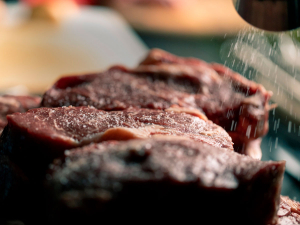Move over ham, here comes lamb
It’s official, lamb will take centre stage on Kiwi Christmas tables this year.
 High prices and contracting production in the Northern Hemisphere are opposed by lower prices and increasing production in the Southern Hemisphere.
High prices and contracting production in the Northern Hemisphere are opposed by lower prices and increasing production in the Southern Hemisphere.
Global beef markets continue to be a story of two contrasting parts.
High prices and contracting production in the Northern Hemisphere are opposed by lower prices and increasing production in the Southern Hemisphere.
That's according to Rabobank's latest Beef Quarterly Report, which shows North American cattle prices continue to track at high levels, with steady US cattle prices and a 3% quarterly rise on Canadian prices.
Meanwhile, prices remain soft in Southern Hemisphere countries, with a dramatic 28% fall in quarterly Australian cattle prices.
Meanwhile, New Zealand and Brazil also saw prices fall, but by smaller amounts.
While Southern Hemisphere production continues to increase volumes, these have not been enough to offset the declines in Europe and the US.
Rabobank says global beef production is on track to decline by 1% in 2023 and 2024 production from major producing countries is expected to remain relatively constant to expected 2023 volumes.
The report also says while overall production and consumption in 2024 is expected to remain steady.
“The US will be one of the big movers. After shifting to a net-import position in 2023, we expect production to contract a further 4.5%, while consumption drops 3% in 2024, increasing the net-import position.”
“Australia and Mexico will be the major beneficiaries, with increases in production and exports expected for both countries. New Zealand, another large supplier to the US – particularly in lean trimmings – will also benefit, but restricted production and export growth will limit the gains.”
Rabobank expects the ongoing slow global economic recovery will limit consumers’ expenditure and likely curb their spending on beef next year, as any markets – particularly in Asian countries – did not experience the growth in consumption expected as economies recovered from Covid-19.
“Indications from China are that the type of products in demand is changing, with more attention being paid to value-for-money products and less to premium ones. This consumer caution may be supported initially by reduced volumes of more expensive North American beef and increased volumes of Australian and South American beef,” the report adds.
“However, when production in the US contracts to the point where it exerts upward price pressure on global beef prices, we may see some pushback from global beef consumers. It is possible that 2024 will see margins in beef supply chains being squeezed to manage higher prices and accommodate the consumer.”
Horticulture New Zealand (HortNZ) says a new report projects strong export growth for New Zealand's horticulture sector highlights the industry's increasing contribution to the national economy.
Fonterra shareholders say they will be keeping an eye on their co-operative's performance after the sale of its consumer businesses.
T&G Global says its 2025 New Zealand apple season has delivered higher returns for growers, reflecting strong global consumer demand and pricing across its Envy and Jazz apple brands.
New Zealand's primary sector is set to reach a record $62 billion in food and fibre exports next year.
A new levying body, currently with the working title of NZWool, has been proposed to secure the future of New Zealand's strong wool sector.
The most talked about, economically transformational pieces of legislation in a generation have finally begun their journey into the statute books.

OPINION: Federated Farmers has launched a new campaign, swapping ‘The Twelve Days of Christmas’ for ‘The Twelve Pests of Christmas’ to…
OPINION: It used to be that the National Fieldays attracted brickbats for being officious clipboard carriers, while the regional, farmer-run field…